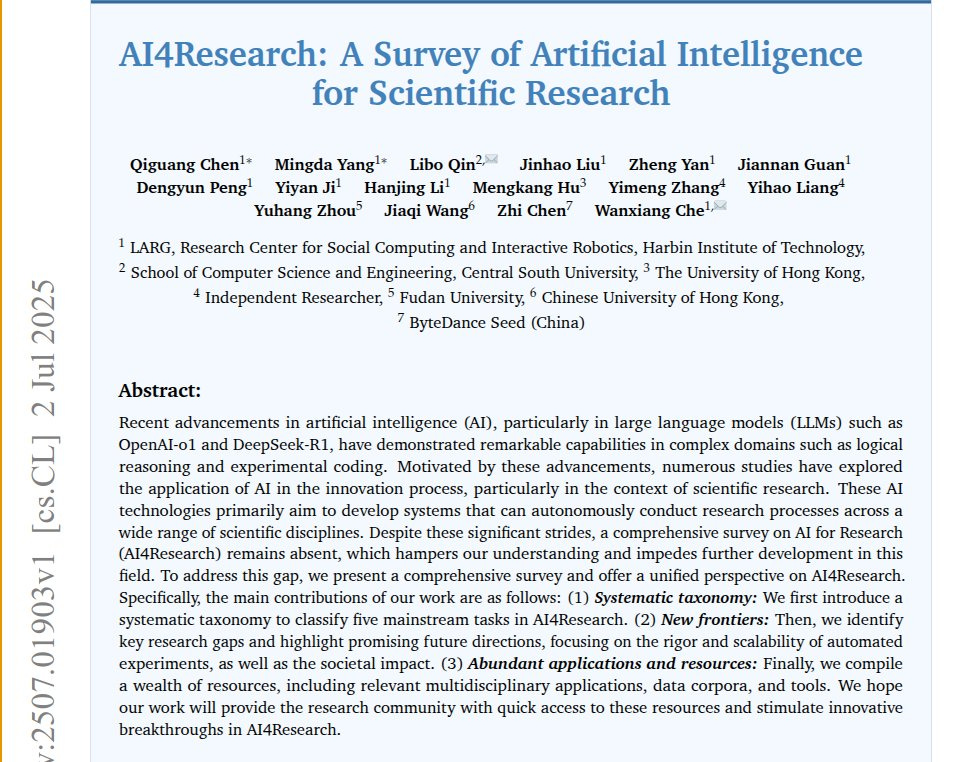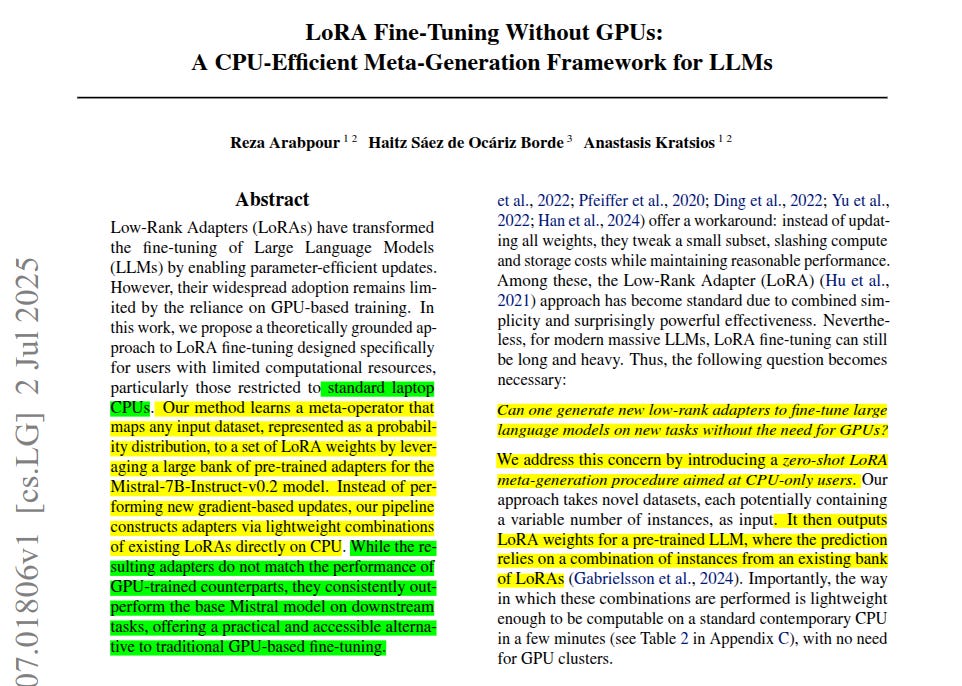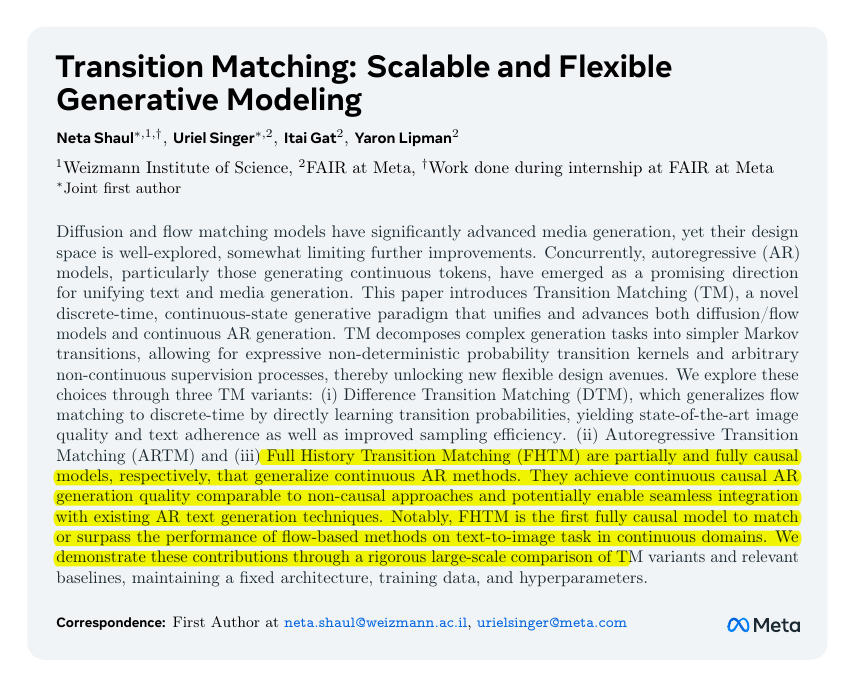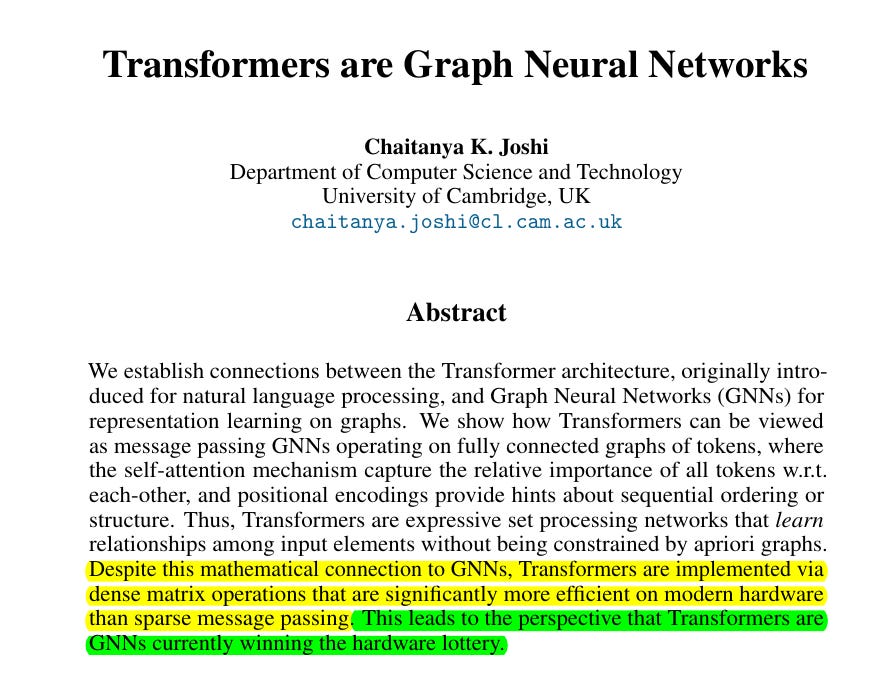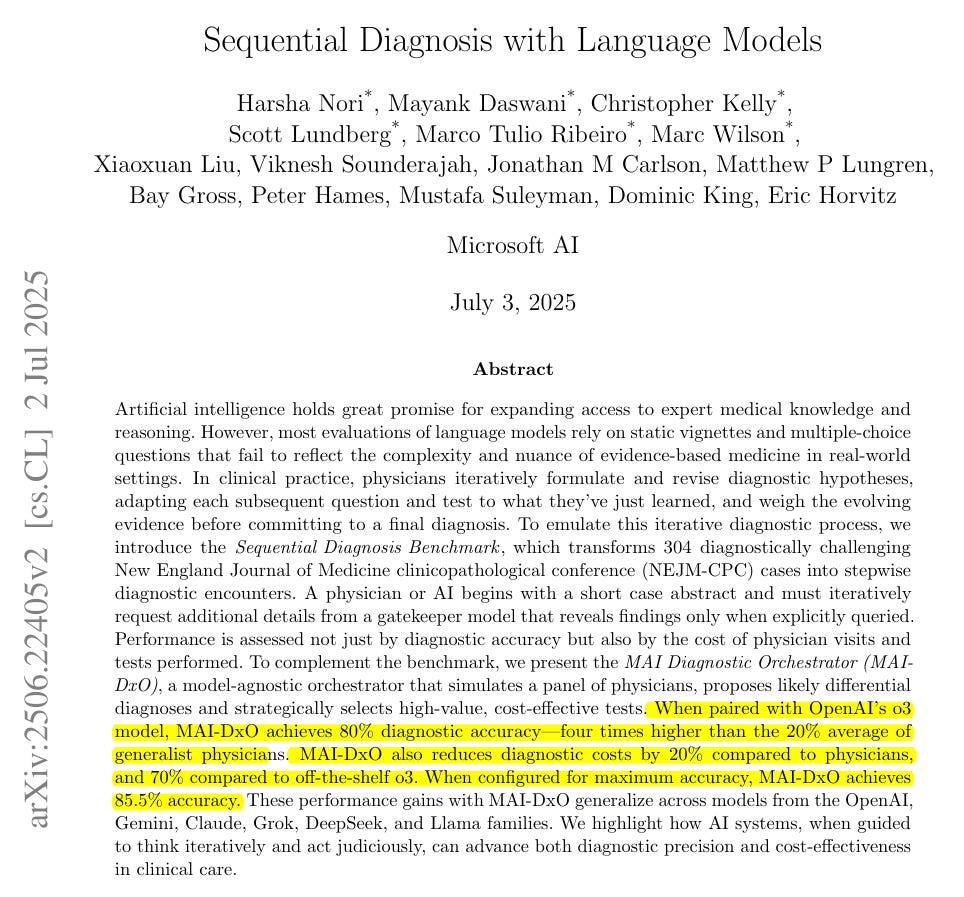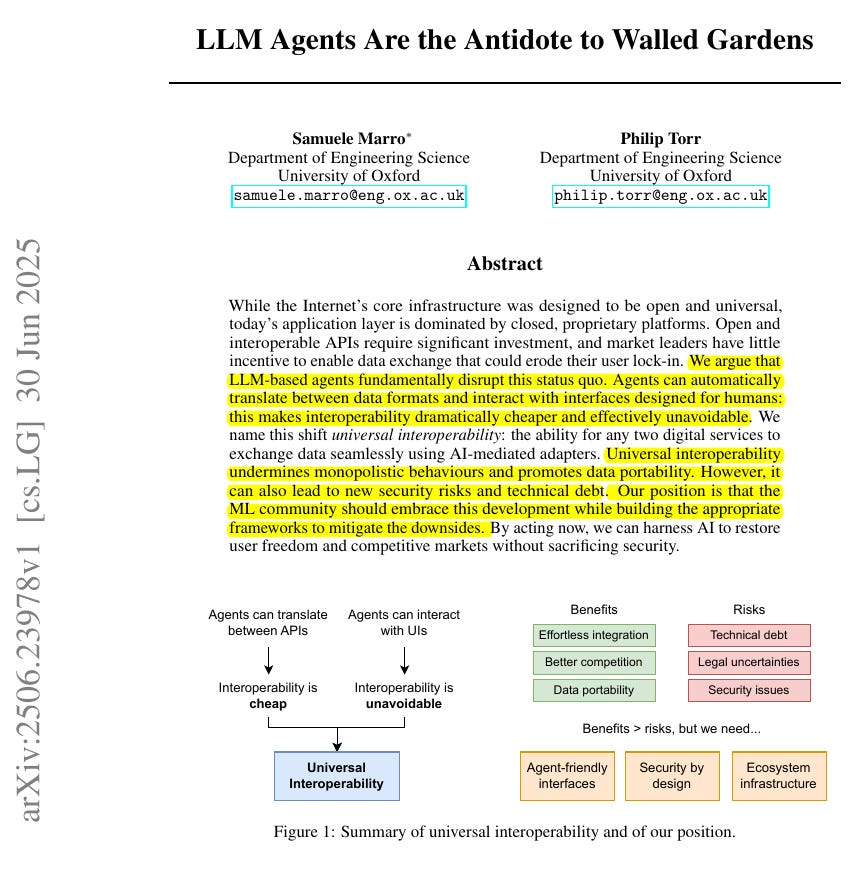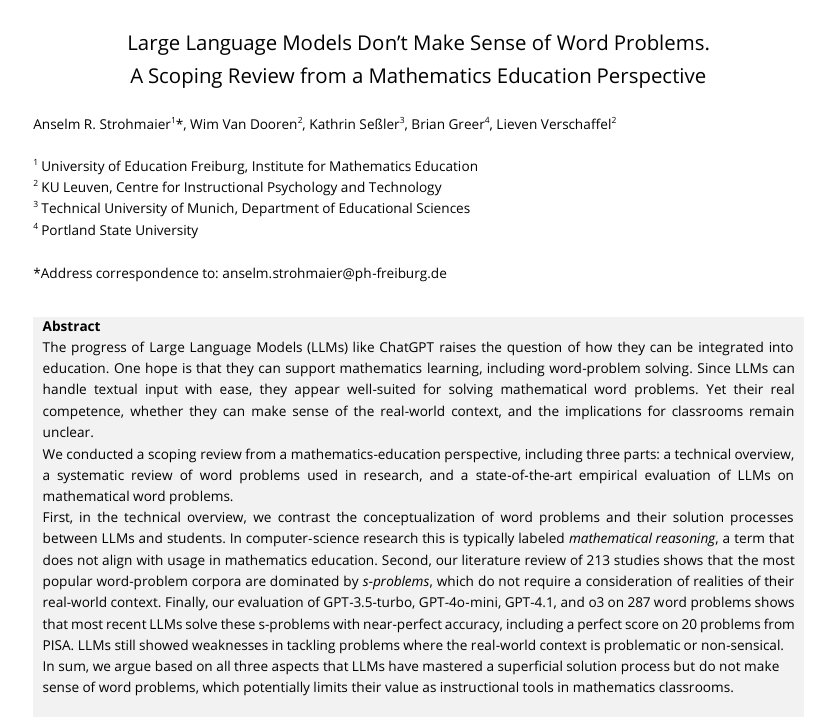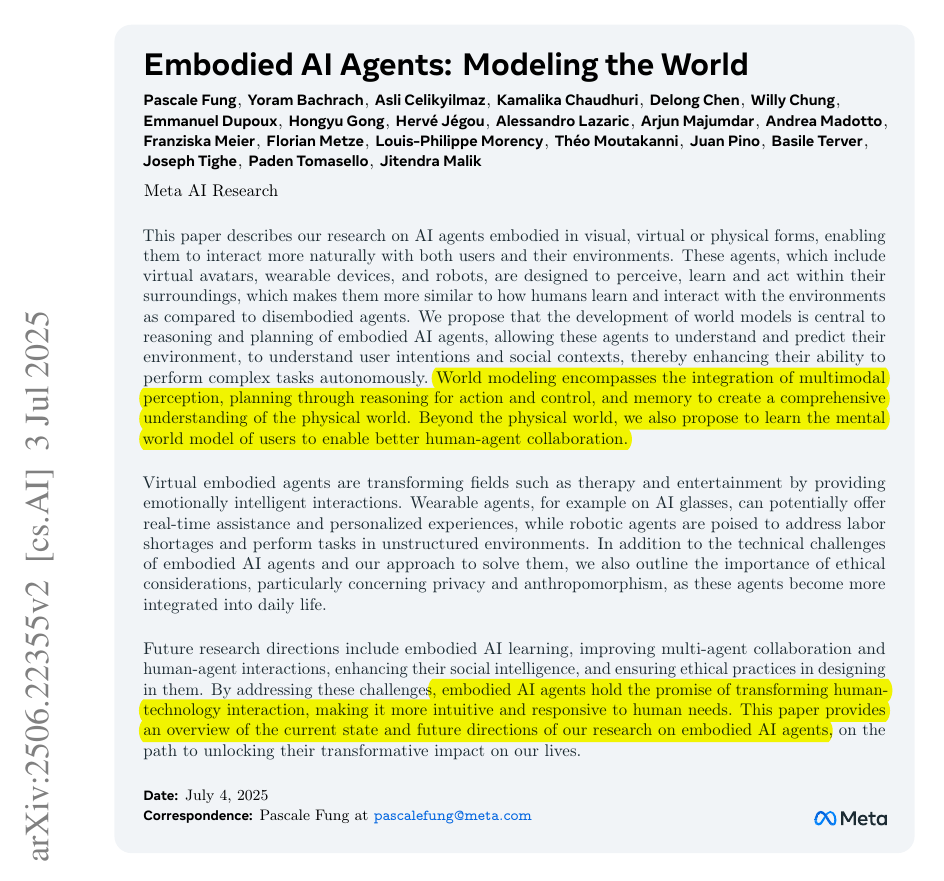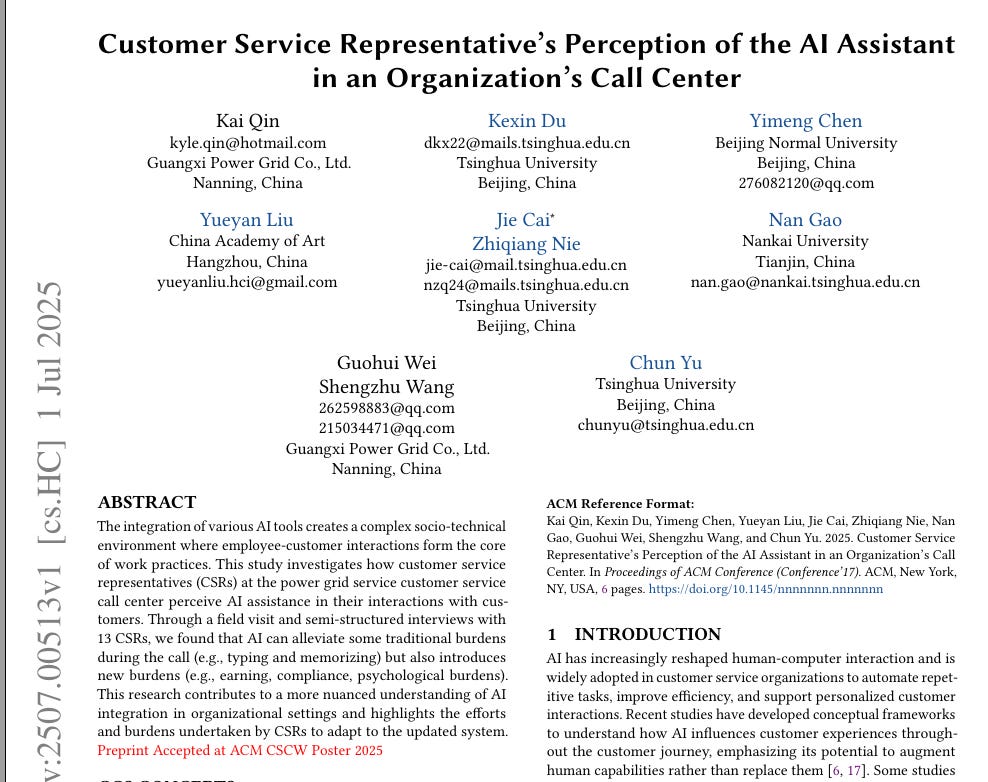Read time: 10 min
📚 Browse past editions here.
( I publish this newletter daily. Noise-free, actionable, applied-AI developments only).
⚡In today’s Edition (6-July-2025):
🗞️ "AI4Research: A Survey of AI for Scientific Research"
🗞️ "LoRA Fine-Tuning Without GPUs: A CPU-Efficient Meta-Generation Framework for LLMs"
🗞️ "Transition Matching: Scalable and Flexible Generative Modeling"
🗞️ "Transformers are Graph Neural Networks"
🗞️ "Sequential Diagnosis with Language Models"
🗞️ "LLM Agents Are the Antidote to Walled Gardens"
🗞️ "LLMs Don't Make Sense of Word Problems. A Scoping Review from a Mathematics Education Perspective"
🗞️ "Embodied AI Agents: Modeling the World"
🗞️ "Customer Service Representative's Perception of the AI Assistant in an Organization's Call Center"
🗞️ "AI4Research: A Survey of AI for Scientific Research"
This 120+ pages survey maps AI help across the research cycle and shows a unified toolkit is in reach. It defines AI4Research as 5 linked modules: scientific comprehension, academic survey, scientific discovery, academic writing, and peer review.
Each module gets formal input output roles and clear quality targets, giving tool builders common goals. The review then spots bottlenecks like weak multilingual support, scarce cross modal data, privacy friction, and missing explainability standards.
It also logs open datasets, code bases, and agent frameworks so teams can start fast. overall, the survey turns scattered efforts into a roadmap for end to end AI driven research.
🗞️ "LoRA Fine-Tuning Without GPUs: A CPU-Efficient Meta-Generation Framework for LLMs"
This paper shows how to make new LoRA adapters on a laptop CPU by remixing a library of ready adapters.
The method builds one adapter for a new dataset by measuring how close that dataset is to earlier datasets that already have LoRA weights. It then turns those similarity scores into mix‑ratios and blends the stored adapters into a fresh one.
The fresh adapter plugs straight into the base Mistral‑7B model and lifts quality without any gradient steps. The result sits between the unfine‑tuned model and a full GPU‑trained adapter in both accuracy and effort, so small teams now get a practical middle ground.
🛠️ The Core Concepts
Full fine‑tuning moves every weight in the language model and that is too heavy for most users.
LoRA keeps the base weights frozen and adds low‑rank matrices that are tiny.
The authors store many of these tiny adapters that were trained on different tasks.
For a new task they pick mix‑ratios, add up the stored adapters with those ratios, and get a new adapter ready to run.
📊 Why Sparsity Helps
A heatmap of the normalized pipeline shows each new adapter relies on just 1‑2 stored adapters while the neural and plain attentional versions spread weight wider. That sparsity lines up with the best scores, so picking a few close neighbors is often enough. This hints that the adapter bank can stay small if it covers diverse tasks.
🗞️ "Transition Matching: Scalable and Flexible Generative Modeling"
The work shows that a single recipe unifies diffusion, flow and autoregressive tricks, gives sharper output, and reaches about 7X faster sampling without changing the main network.
Transition Matching learns the jump between states, giving sharper images with fewer steps. It outperforms diffusion, flow and autoregressive baselines on quality and speed.
🔍 Diffusion and flow hit a wall: Their fixed noise or deterministic flows leave almost no space for fresher ideas.
🧩 Transition Matching idea: It learns the full probabilistic kernel that moves one state to the next, guided by a simple supervising path. This opens unlimited design choices without touching the backbone.
🚀 Three flavors, one gain: Difference TM predicts the difference vector, reaches top text alignment, and samples with only 16 backbone calls giving about 7× speedup. Autoregressive TM orders patches so each token sees earlier ones, beating masked and discrete AR models.
Full‑History TM feeds the whole trajectory into a causal network and becomes the first causal model matching flow quality in continuous space.
📊 Evidence: Tests on 350M Shutterstock pairs with identical 1.7B DiT backbones show gains across CLIPScore, PickScore, GenEval and human rewards.
An independent linear scheduler keeps autoregressive training stable, another small but vital tweak. Overall, learning transitions directly proves a simple route to scalable flexible generative modeling.
🗞️ "Transformers are Graph Neural Networks"
Transformers and graph networks seem different. Transformers and graph neural networks share the exact update math, so every attention layer is just global message passing.
Dense attention fits GPUs, so Transformers train and run much faster than sparse graph models yet still match or beat them on accuracy.Models for graphs and texts have grown apart, fragmenting ideas and tooling.
The work rewrites each self attention step as a message passing update over a fully connected graph, matching Graph Attention Network equations exactly.
Because those computations reduce to big dense matrices, GPUs run them much faster than the sparse gathers used in classic GNNs. Scale then lets Transformers pick up local structure through learned positional hints, so they reach similar or better accuracy on molecules, proteins, and social graphs without changing the architecture.
The key insight links 2 research lines and explains why practitioners increasingly prefer 1 versatile model family. Self attention equals global message passing, giving Transformers graph power without graph cost.
🗞️ "Sequential Diagnosis with Language Models"
The paper from Microsoft shows that a well guided language model can spot rare diseases and save money.
“We highlight how AI systems, when guided to think iteratively and act judiciously, can advance both diagnostic precision and cost-effectiveness in clinical care.”
It does this by turning 304 tough New England Journal of Medicine cases into chats where the model must ask for details, order tests, pay virtual bills, and finally name the illness.
Old tests fed every clue at once, so models looked smarter than they were and often ordered no‑limit scans that real patients could never afford. The authors build SDBench, a playground that releases information only when the model explicitly requests it, and each question or scan adds to a running bill just like in a clinic.
They then wrap the OpenAI o3 model in MAI‑DxO, an “all star” panel made of 5 virtual doctors who argue, track probabilities, fight anchoring bias, and veto wasteful tests while watching a budget.
MAI-DxO is a control layer that sits on top of any strong language model and turns it into a disciplined diagnostic agent. It does this by making the model role play a panel of 5 virtual doctors, each with a specific job. One doctor keeps a probability-ranked list of diseases, another chooses the most informative tests, a third challenges early hunches, a fourth protects the budget, and a fifth checks consistency.
MAI‑DxO nails 80% of diagnoses, 4x the physician average, and cuts test cost by 20% versus humans and 70% versus the raw model, proving that smart orchestration beats brute force.
Conclusion: Structured prompting that tracks probabilities, debates alternatives, and vetoes wasteful tests can turn an off-the-shelf model into a reliable, budget-friendly diagnostic assistant that outperforms experienced clinicians on complex cases.
🗞️ "LLM Agents Are the Antidote to Walled Gardens"
LLM agents make any two online services talk to each other, breaking data silos and shrinking lock‑in.
This new ease of integration means universal interoperability is coming, and the community now has to set up clear security and reliability guardrails to use it safely. The paper shows agents cut integration cost so much that closed platforms lose their moat.
Most services keep proprietary APIs causing high switching cost. Agents translate formats and operate human web pages, so interoperability becomes automatic.
⚙️ The core concepts:
Agents read API docs, spot matching fields, then write glue code on the fly. They also browse pages like a user, clicking buttons and scraping data when no API exists.
Agents can read both sides and write small conversion programs, called adapters, almost instantly. Because the code is generated and reused, the expense drops from 4 weeks of work to 5 minutes of compute and review.
When adapters appear this fast, any company can move or copy user data between services without waiting for official support. Closed platforms lose their usual grip because users can leave as soon as another service offers better features or lower price.
Fast automation also opens new danger. An adapter might leak private data, violate a site's terms, or pull information that copyright law protects.
Courts will test whether automated browsing counts as legitimate use, and vendors may trap teams inside one proprietary agent toolkit, recreating the old lock in under a new name.
Project teams can limit harm by adding clear machine readable hints in APIs and in web forms that tell an agent what it may and may not do. Running agents inside a sandbox first, and sharing open data formats, lets the community check behavior before any real customer data moves.
🗞️ "LLMs Don't Make Sense of Word Problems. A Scoping Review from a Mathematics Education Perspective"
LLMs nail standard school word problems but fall apart when the question needs real‑world sense. This scoping study tracks why and shows classroom use needs care.
⚙️ The Core Concepts: LLMs slice every prompt into tiny tokens and predict the next token from statistics, so solving means matching patterns, not building a picture of the story .
Problem sets used to train and test the models are heavily skewed toward s‑problems, short tasks that collapse to plain arithmetic. Only a few include contextual twists or nonsense questions .
🔍 Method: The authors compared 4 OpenAI models on 287 questions from 4 popular data sets plus classic education tasks. They sent each question 5 times with no examples and hand graded the answers .
✏️ Results GPT‑3.5 hit 80‑85% on easy sets, GPT‑4.1 and o3 hit almost 100%, yet even o3 solved only 80% of realistic or nonsense puzzles and often ignored obvious impossibilities .
🎒 The study therefore concludes that chatbots are fine for quick arithmetic checking, yet teachers and students must not rely on them for tasks that need modelling or basic reality checks because the models still treat every prompt as token patterns rather than true situations.
🗞️ "Embodied AI Agents: Modeling the World"
Embodied AI agents gain reliability only when they carry an internal predictive world model that fuses vision, audio, language and touch, rolls future states forward, and picks the lowest cost action at every step.
The study finishes by stating that such models, backed by on-device encrypted memory and careful privacy checks, will let virtual avatars, wearable glasses and household robots plan safely, adjust to new tasks on the fly, and work with people as trusted everyday partners.
It shows that such models make avatars, smart glasses, and robots safer and more useful. Current generative models track pixels and words but ignore the causal links needed for long tasks.
The authors train a predictive model that rolls future states in a latent space and picks the lowest‑cost action each step. A shared perception encoder, joint‑embedding predictor, and short‑plus‑long memory let one design scale across vision, audio, touch, and language.
Benchmarks reveal humans near 90% while existing vision‑language baselines sit near 40%, highlighting the gap this approach tackles.
Early V‑JEPA and vision‑language world models boost planning success around 20% and cut hallucinated steps. The paper also flags privacy, proposing on‑device encrypted storage and federated learning with differential privacy.
🗞️ "Customer Service Representative's Perception of the AI Assistant in an Organization's Call Center"
AI in the power-grid call center reduces typing and memory chores, but it pushes human-agents to correct bad transcripts, trim long templates, and double-check every address and phone number.
Real gains show up only if designers strip away these new learning, compliance, and stress burdens so the tool truly lightens the workload. Real frontline tests prove gains and pains balance unless designers remove new frictions.
📌 Speech to text helps when callers talk fast, but it stumbles on dialects, long calls, and phone numbers, so agents still scroll and retype.
📊 Form autofill looks clever, yet its pop‑ups and vague wording force extra edits to satisfy strict work‑order rules, cancelling much of the speed win.
💬 Interviews with 13 power‑grid agents show AI swaps old typing burden for new learning, compliance, and stress burdens, so designers must cut those hidden costs.
That’s a wrap for today, see you all tomorrow.


